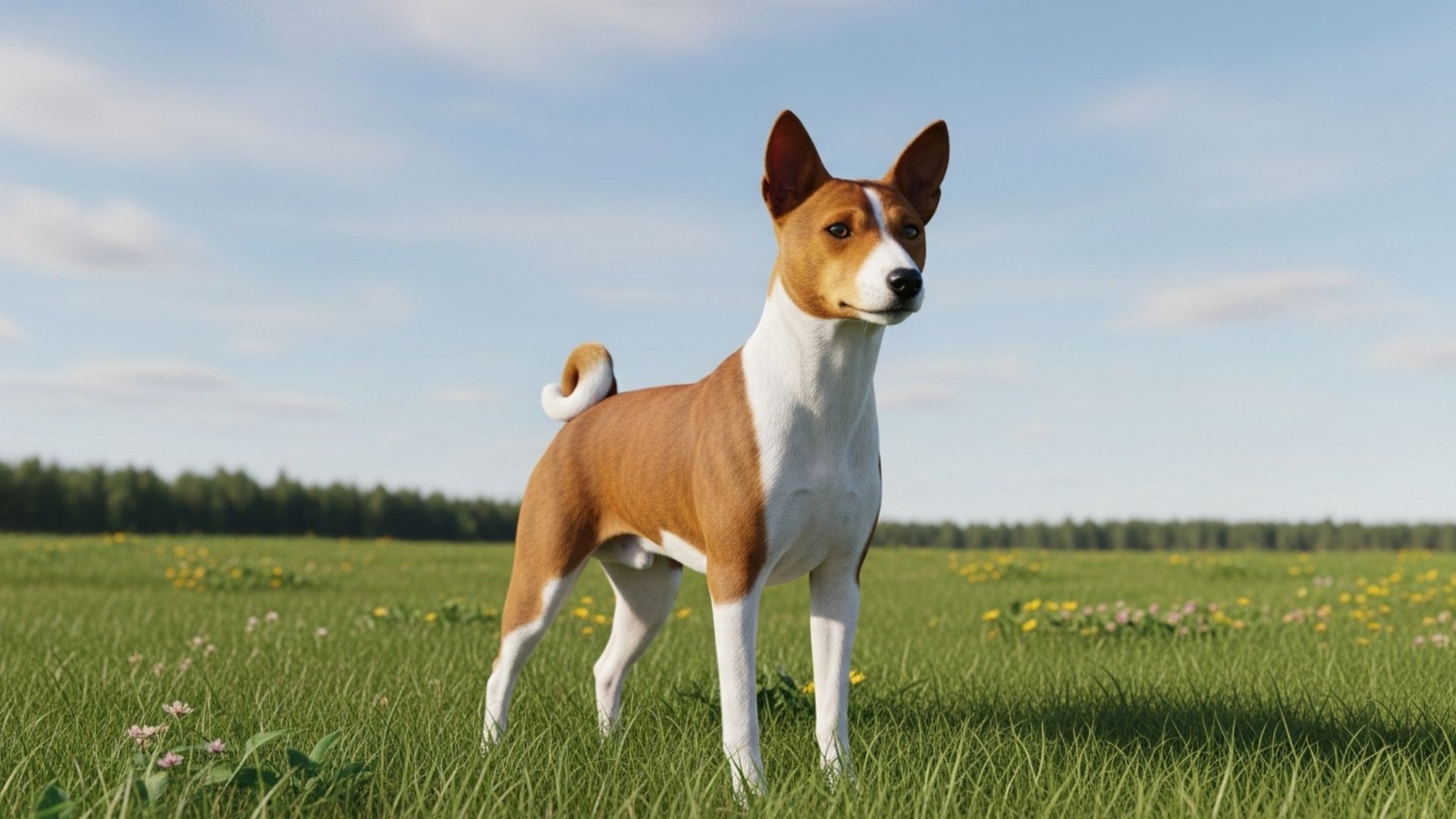Finding the right dog often means choosing a companion whose personality blends seamlessly with your lifestyle—and for many people, that includes a peaceful, low-noise home.
While barking, howling, and vocal enthusiasm are perfectly natural ways for dogs to communicate, they’re not always ideal in close-quarter living. Apartment dwellers, remote workers, and anyone who values a calm environment quickly learn that a noisy dog can make daily life more stressful than serene.
Of course, no dog will ever be completely silent. Just like people, each pup has its own quirks, tendencies, and voice. But some breeds are naturally more reserved, using their vocal cords sparingly and relying instead on body language and quiet companionship.
For owners who prefer fewer interruptions—or who want to avoid the challenges of calming a reactive or overly chatty dog—opting for a breed known for its gentle volume can make all the difference.
In this guide, we’ll explore a range of dog breeds celebrated for their quiet nature and minimal barking habits. Whether you’re searching for a peaceful partner for apartment living or simply want a companion who won’t disrupt the neighborhood, these quieter breeds may be exactly what you need.
Best Dog Breeds If You Value a Quiet Environment
1. Basenji

The Basenji—often referred to as the barkless dog—is a compact hound known for its sleek build, short coat, and expressive, curled tail. According to the AKC, the Basenji is depicted as a compact, sweet-faced hunting breed noted for its intelligence and composed demeanor.
Originating from Africa, this breed is famous for its unusual vocalizations, producing yodel-like sounds instead of traditional barking. Their quiet nature makes them especially appealing to those seeking a peaceful home environment.

What sets the Basenji apart is its naturally low-noise personality. They rarely vocalize, making them an excellent match for apartments or homes with noise-sensitive neighbors. Instead of barking, they communicate through soft yodels or whines, usually only when excited or deeply engaged in play.
Basenjis are also ideal for quiet households because they tend to be clean, catlike dogs that groom themselves and move with a graceful calmness indoors. Their reserved nature means they don’t react loudly to every sound, helping maintain a serene atmosphere throughout the day.
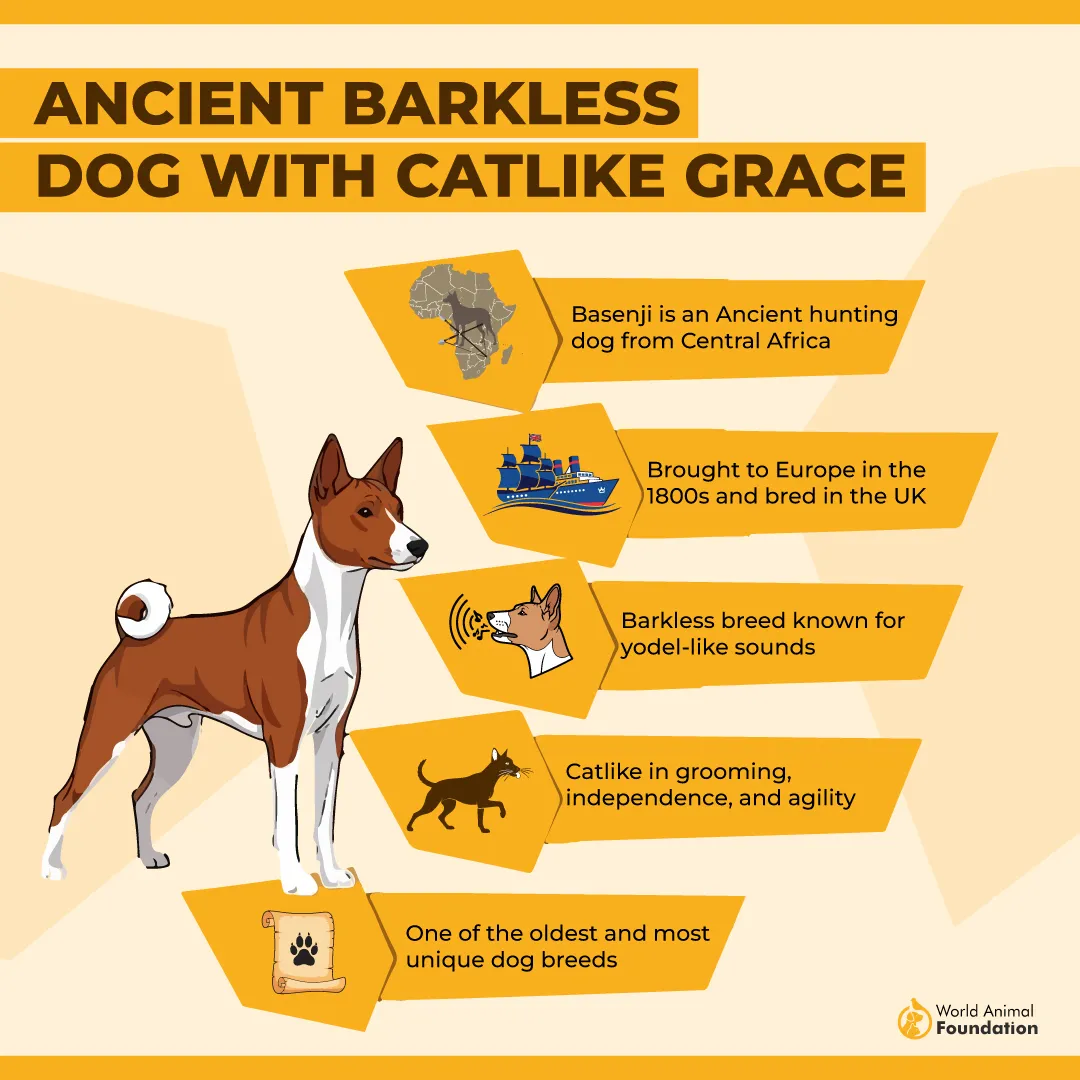
Even though they’re energetic and independent, their quiet temperament keeps disruptions to a minimum. With consistent training and enough stimulation, they thrive without adding unnecessary noise to your living space.
Fun fact: Basenjis don’t bark at all—instead, they “yodel,” producing a unique sound known as a baroo.
2. Greyhound

The Greyhound—also known simply as the “Gentle Grey”—is a sleek, long-legged sighthound best known for its record-breaking speed and graceful silhouette.
Despite their athletic build, they’re famously calm indoors and prefer lounging on soft surfaces to constant activity, making them an unexpectedly peaceful addition to a quiet home.
According to PetMD, the Greyhound is classified as a sighthound, meaning it depends on speed and agility to pursue prey, in contrast to many other hound breeds that rely primarily on scent and stamina.

What keeps a Greyhound so serene is their naturally mellow temperament. They rarely bark and will typically walk away from anything that bothers them rather than react vocally. Because they spend much of their day napping, they blend seamlessly into noise-sensitive environments like apartments or shared buildings.
Their quiet behavior continues even after exercise. While they appreciate daily walks or short bursts of running, they transform back into gentle couch companions as soon as they’re inside. This low-key routine helps maintain a calm atmosphere without frequent disruptions.
Though they may whine a bit when left alone, proper training and routine help minimize these moments. Overall, their relaxed independence and peaceful demeanor make them ideal for anyone seeking a tranquil canine companion.
Fun fact: Greyhounds are among the few hound breeds consistently recognized for being naturally quiet around the home.
3. Cavalier King Charles Spaniel

The Cavalier King Charles Spaniel—often called the Cavalier or CKCS—is a small, silky-coated toy breed known for its expressive eyes and affectionate nature. Adaptable and people-oriented, they thrive in many environments as long as they’re close to their humans.
According to Britannica, coat maintenance involves routine brushing and periodic bathing, and the fur on the abdomen may become soiled with urine, requiring either trimming or daily cleaning.
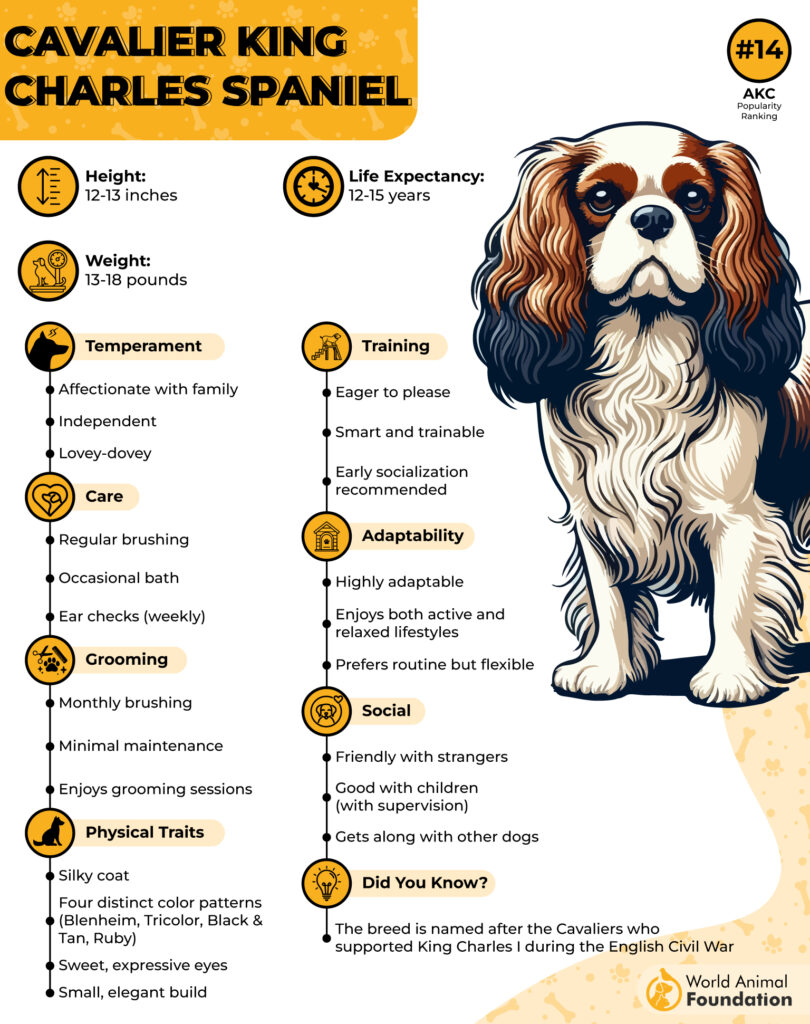
Cavaliers tend to stay quiet because they are naturally gentle and welcoming. They seldom bark out of suspicion, as they’re more likely to greet strangers with a wag than with a warning. Their calm demeanor makes them ideal for owners who prioritize a peaceful home.
Their low vocal tendencies also come from their desire for companionship. These dogs are happiest when they’re by your side, so they rarely vocalize unless they feel lonely or overlooked. When content and included, they remain soft-spoken and easygoing.
However, separation can trigger barking since Cavaliers can become anxious when left alone. Their rare vocal outbursts usually signal emotional needs rather than reactive tendencies.
Fun fact: Cavaliers can alter their bark depending on whether they’re excited, fearful, or seeking attention.
4. Bulldog

The Bulldog—also known as the English or British Bulldog—is instantly recognizable for its wrinkled face, broad build, and calm demeanor.
Despite their sturdy appearance, these dogs are gentle companions that prefer relaxed routines and plenty of downtime, making them a natural fit for quieter households.
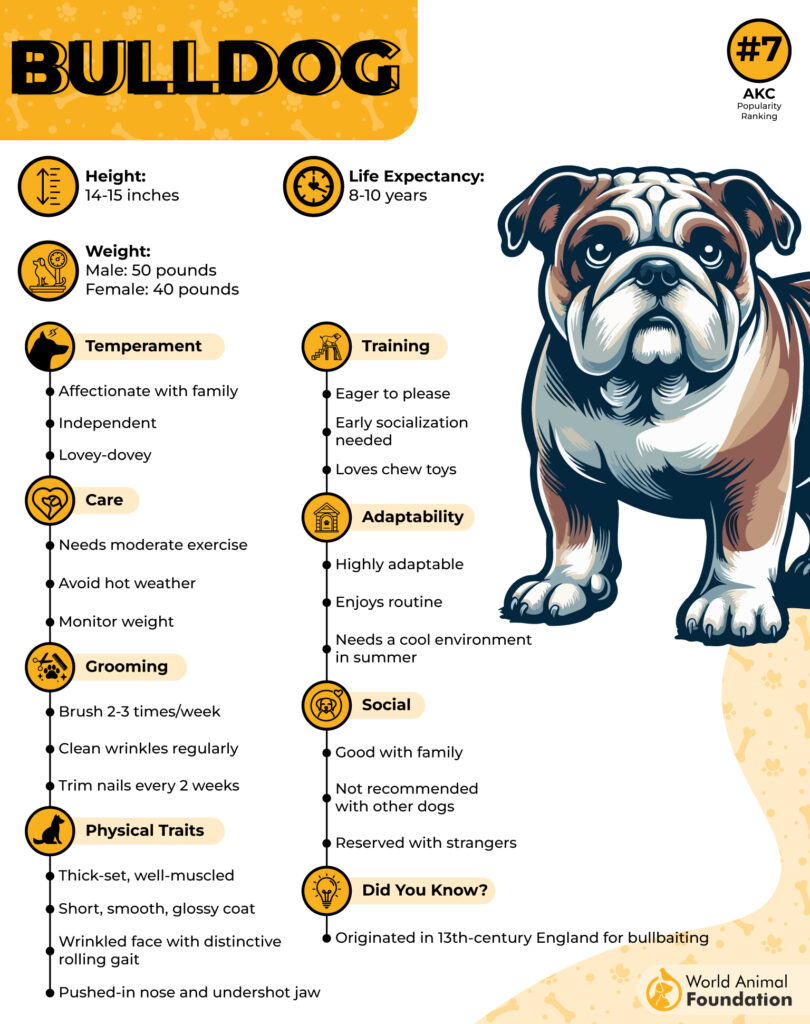
One of the main reasons Bulldogs rarely bark is their brachycephalic facial structure. Their short snout and narrow airways limit the airflow needed for loud, frequent barking, so they tend to communicate through softer sounds instead.
Owners will often hear snorts, snuffles, and the occasional wheeze rather than persistent vocalizing.
Their easygoing nature also contributes to their quiet profile. Bulldogs enjoy lounging, napping, and being close to their people, and their low energy levels mean they’re less reactive to everyday noises. This makes them especially well-suited for apartment living or noise-sensitive environments.
However, that same facial structure makes them prone to heavy snoring, especially during deep sleep. It’s part of their charm—but also something to keep in mind if you value silence around bedtime.
Fun fact: Bulldogs are known to snore, snort, and make throaty noises because of their brachycephalic airway design.
5. French Bulldog

The French Bulldog—also known as the Bouledogue Français or the “Frenchie”—is a small, compact companion famous for its bat-like ears, expressive face, and charmingly stocky build.
Bright and affectionate by nature, this little breed stays alert without being vocal, making it an excellent fit for anyone seeking a peaceful living space.
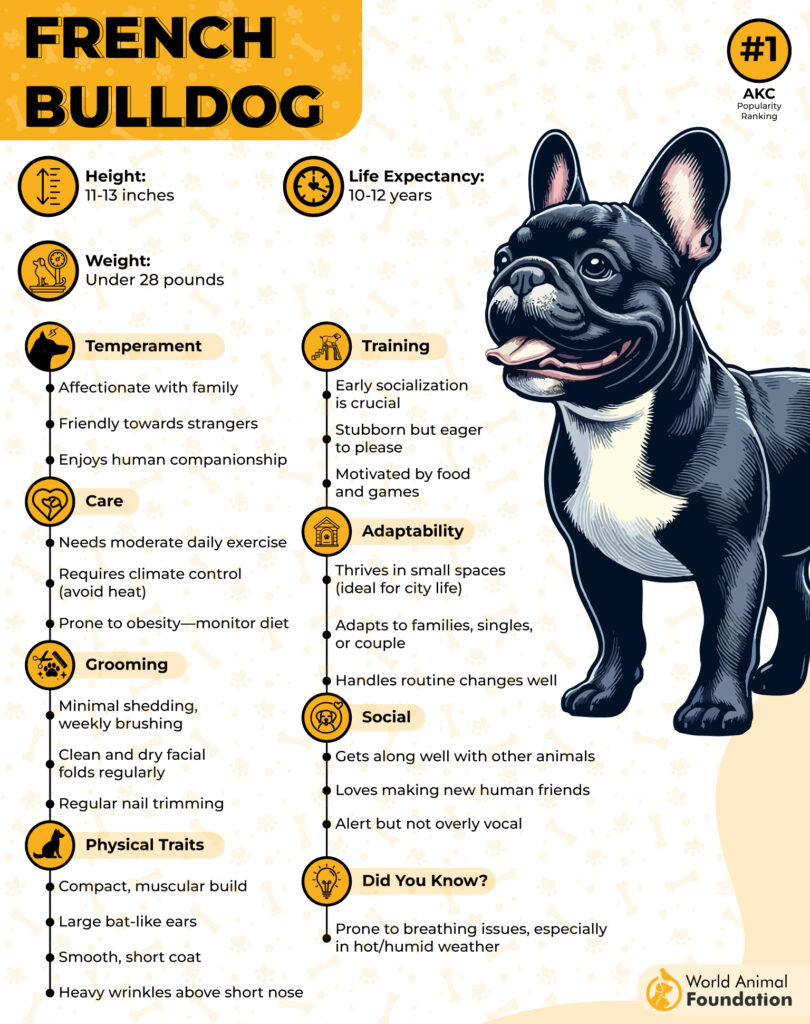
Frenchies thrive in calm homes where relaxation is part of the daily routine. They love curling up beside their people and prefer lounging on the sofa to engaging in rowdy activity, making them ideal for quiet households or apartments with close neighbors.
Their tendency to bark only when necessary—often just to signal a visitor—further strengthens their reputation as one of the best breeds for maintaining a serene environment. Though they stay attentive, they communicate through soft snorts and chortles rather than loud outbursts.
However, potential owners should expect adorable snoring and occasional wheezing, especially during naps. Their cozy, laid-back demeanor pairs perfectly with those who enjoy gentle companionship.
Fun fact: French Bulldogs are known for making a variety of soft, quirky sounds that add to their signature charm.
6. Bernese Mountain Dog

The Bernese Mountain Dog—also called the Berner—is a large Swiss working breed known for its striking tri-colored coat and calm, affectionate demeanor. Despite their size, they are gentle giants that enjoy a peaceful home and steady companionship.
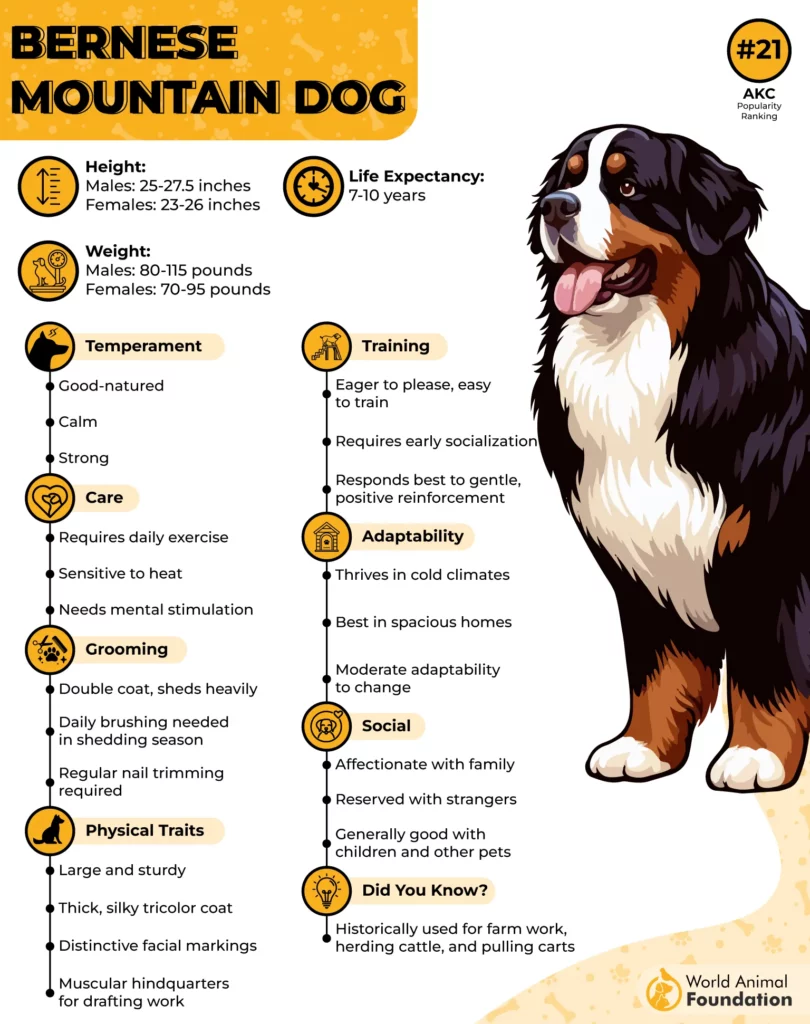
Berners are naturally quiet because they were bred to work alongside farmers, not to sound alarms. Their even temperament and patient nature mean they seldom bark without reason, making them well-suited for people who prefer a serene household.
Their strong desire to stay close to their families also contributes to their low vocalization. Instead of barking, they tend to communicate through body language or soft grumbles, especially when relaxing indoors.
Because they’re confident and rarely reactive, Berners are unlikely to vocalize at every passing noise or unfamiliar sound. This makes them an excellent match for those who live in shared buildings or simply value tranquility.
Fun fact: Bernese Mountain Dogs are known for staying quiet and relaxed even when there’s activity happening outside.
7. Great Dane

The Great Dane—often called the “gentle giant”—is one of the largest dog breeds in the world, yet remarkably calm and soft-spoken.
Known for their towering height and sleek, short coat, these dogs are admired for their affectionate personality and their natural tendency toward quiet behavior, barking only when they truly need to communicate.

Despite their size, Great Danes are famously serene around the home. Their even-tempered nature means they rarely vocalize, making them ideal for owners who want a peaceful atmosphere.
They prefer lounging near their people over making noise, which contributes to their reputation as one of the quietest large breeds.
What also sets them apart is their desire to please. This people-oriented attitude encourages polite behavior, including minimal barking and gentle interactions. Their soft disposition makes them wonderful companions for families and individuals who appreciate calm, low-noise pets.

While they require ample space and daily exercise, Great Danes remain composed and quiet, offering tranquility rather than chaos.
Fun fact: Great Danes typically bark only for meaningful reasons—like alerting or greeting—making them surprisingly peaceful giants.
8. Newfoundland

The Newfoundland—often affectionately called the Newfie—is a massive working breed known for its sweet nature, powerful build, and remarkable swimming ability.
With their dense double coat and calm demeanor, they’ve long been cherished as gentle giants who form deep bonds with their families.

Despite their size, Newfoundlands tend to be wonderfully quiet companions. They rarely bark without purpose, making them ideal for households where noise needs to be kept to a minimum.
Their laid-back temperament allows them to bring a sense of peace to the home, even when you’re juggling the chaos of a busy schedule.
These dogs thrive with moderate daily activity, but they don’t require constant stimulation to stay content. Their mellow energy makes them excellent for owners who want a relaxed, soothing presence rather than a high-strung dog demanding nonstop entertainment.
If you enjoy a calm environment, a Newfie’s gentle approach to life fits beautifully. Newfoundlands are famously patient and nurturing, often nicknamed “nanny dogs” due to how well they get along with children.
Fun fact: Many Newfoundlands prefer sitting in your lap—despite weighing between 100 and 150 pounds.
9. Japanese Chin
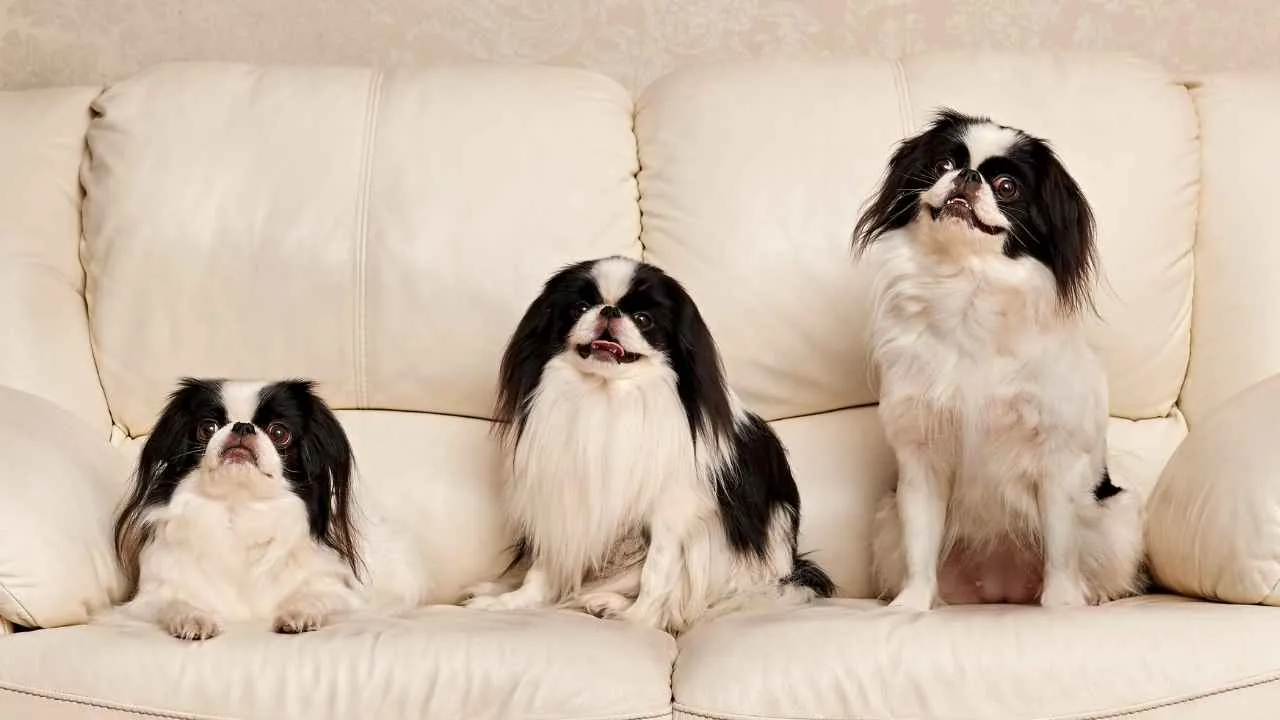
The Japanese Chin—also known historically as the Japanese Spaniel—is a tiny, elegant toy breed with a silky coat, expressive eyes, and a nearly cat-like demeanor.
Once cherished by Asian nobility, they were bred mainly for companionship, which is why they thrive in calm, indoor environments and naturally stay on the quieter side.
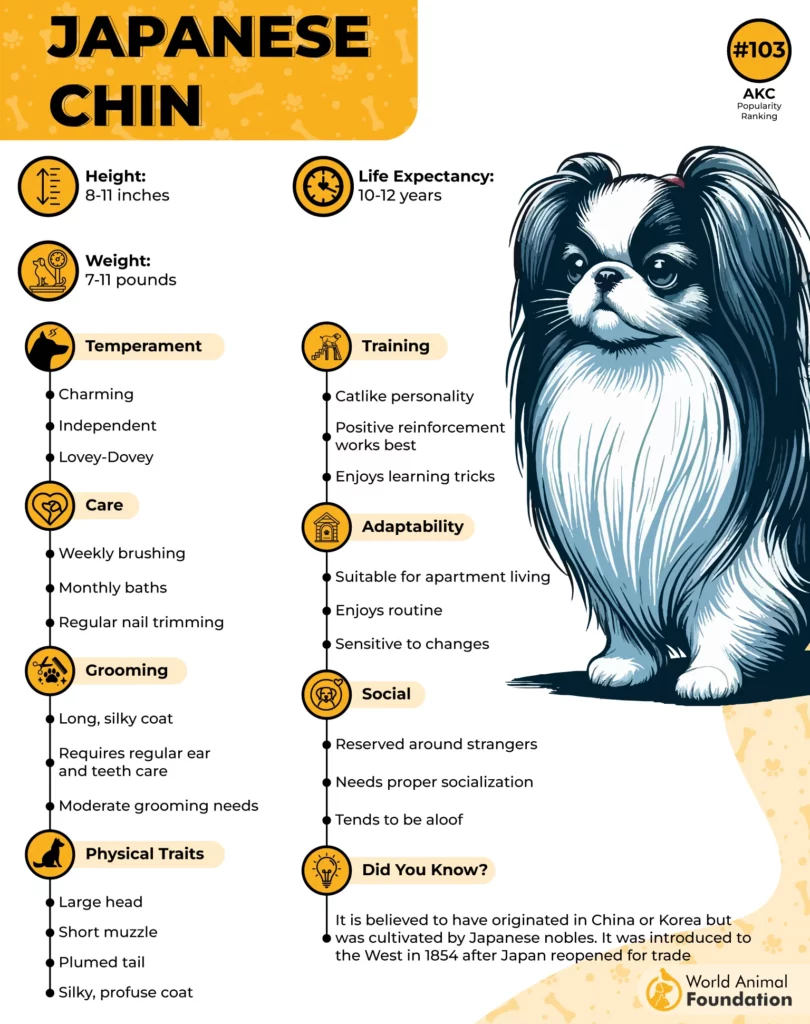
Their gentle personality makes them an excellent match for those seeking peace at home. Chins tend to communicate through soft chirps or subtle movements rather than barking, offering comfort through presence rather than noise.
Their small size also allows them to settle easily into apartments or shared buildings without disturbing neighbors.
A Japanese Chin’s ability to soothe comes from its affectionate yet composed nature. Rather than demanding constant attention, they prefer curling up beside their owner, providing companionship without overwhelming sound.
This combination makes them wonderful for people who work from home or value a relaxed atmosphere.
Their intelligence does require patient training, but because they can be sensitive, harsh corrections are counterproductive. With gentle reinforcement, they blossom into charming, quiet companions.
Fun fact: Chins are often described as “feline” because of their graceful movements and independent streak.
Conclusion
Choosing the best dog breeds if you value a quiet environment means embracing calm companionship, gentle energy, and a steady presence in your home.
Many quiet dog breeds—whether slow-moving, originally bred for peaceful work, or naturally soft-spoken—bring a quiet confidence that suits relaxed households beautifully.
Even small dogs like Shih Tzus offer a gentle nature, while small breeds that are well socialized can coexist smoothly with other pets and other dogs.
The Basset Hound, known for its couch potato tendencies, is another wonderful example of how an affectionate nature makes certain breeds a perfect match for quieter lifestyles.
Larger, quieter companions such as the South African Mastiff also embody the best calm dog breeds for families seeking minimal noise and maximum serenity.
Whether you prefer a short walk, a restful evening, or a dog that doesn’t demand attention constantly, these quiet dog breeds prove that peaceful living and loving companionship truly go hand in hand.


